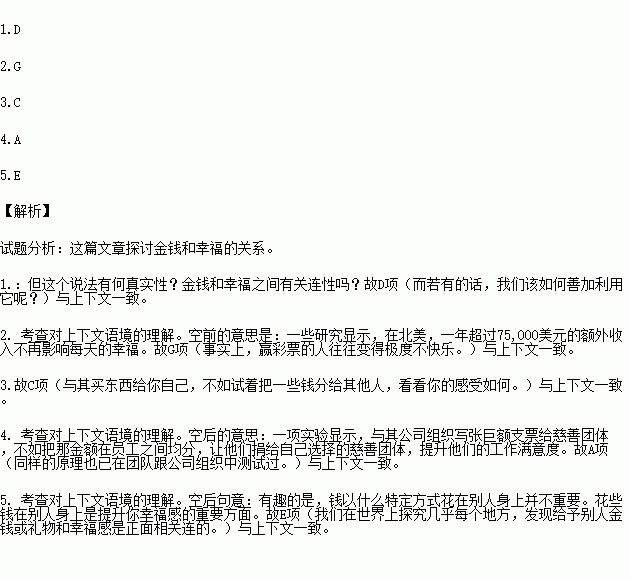题目内容
根据短文内容,从短文后的选项中选出能填入空白处的最佳选项,并在答题卡上将该项涂黑。选项中有两项为多余选项。
While going through life with the pursuit of money on our mind, we're often told that money can't buy happiness. But what truth is there in the saying? Is there a relation between money and happiness? 1.
Humans are very sensitive to change. When we get a rise, we really enjoy it. But some studies have shown that in North America, additional income beyond 75,000 dollars a year stops impacting day-to-day happiness. 2. They often end up spending all the money, going into debt, and experience ruined social relationships.
So surely money can't really buy happiness. Well, recent studies suggest that the problem may actually be in the way that we spend money. 3. Studies show that people who spend their money on others feel happier. As for the people who spend money on themselves, their happiness is unchanged.
4. 0ne experiment showed that instead of an organization writing a large check to a charity, dividing the amount up among employees, allowing them to contribute to a charity of their choice, increased their job satisfaction. Similarly, individuals that spend money on each other, as opposed to themselves, not only increase job satisfaction, but improve the team performance.
5. Interestingly, the specific way money is spent on others isn't important. Spending something on others is the important aspect of increasing your happiness.
A. The same principle has been tested on teams and organizations as well.
B. Money has more effect on the vast majority of people in the long run.
C. Instead of buying things for yourself, try giving some of it to other people and see how you feel.
D. And if so, how can we use it to our advantage?
E. Almost everywhere we look in the world, we see that giving money to others is positively related to happiness,
F. And while you're saving up for these greatest experiences, don't forget the daily joys in life.
G. In fact, people who win a lottery often report becoming extremely unhappy.

